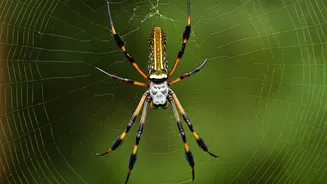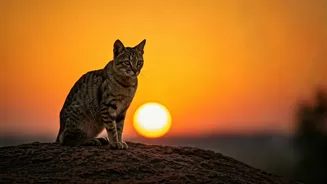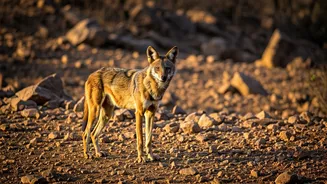Giant Crab Spider
Giant Crab Spiders are a noteworthy group within the Indian spider population. These spiders are known for their large size and crab-like posture, with legs
that extend outwards, resembling a crab. Their coloring typically blends with their surroundings, often exhibiting shades of brown, gray, and sometimes even reddish hues, providing effective camouflage. They are primarily nocturnal hunters, preying on insects and other small creatures. Their habitats span across various regions of India, often found in forests, under rocks, and in other sheltered locations where they can ambush their prey. These spiders contribute to the ecosystem by controlling populations of insects and other invertebrates.
Indian Huntsman Spider
The Indian Huntsman Spider, scientifically known as *Heteropoda venatoria*, is another prominent species. These spiders are relatively large, with a leg span that can reach significant lengths. Huntsman spiders are easily recognizable by their flat bodies and long legs, which enable them to navigate through cracks and crevices. Their color varies, often displaying a mix of brown, gray, and yellowish tones. These spiders are primarily active hunters, frequently seen around human dwellings, where they prey on cockroaches, crickets, and other household pests. Their presence can be beneficial in controlling populations of unwanted insects. The Huntsman Spider's ability to move quickly and efficiently makes it an effective predator within its environment.
Indian Tarantula
The Indian Tarantula is another noteworthy member of the spider fauna. These tarantulas are characterized by their large size and hairy bodies. They typically have a dark coloration, often ranging from brown to black, with variations depending on the specific species and environmental conditions. Indian Tarantulas are primarily nocturnal, spending their days in burrows or hiding in sheltered locations, emerging at night to hunt. They prey on a variety of insects, as well as small vertebrates. These spiders play a critical role in the local ecosystems, helping to regulate populations of their prey. The Indian Tarantula's secretive nature and specific habitat preferences contribute to its unique place within the spider family.
Giant Wood Spider
Giant Wood Spiders represent another significant spider species in India. These spiders are known for their substantial size and the intricate webs they construct, often found stretched between trees and shrubs. Their coloration varies, with a tendency toward brown and gray, providing them with camouflage among the branches and leaves. Giant Wood Spiders are ambush predators, using their webs to catch a range of insects, thereby playing an essential role in insect control within the forest ecosystems. They are known for their strong silk, used to build large and robust webs capable of ensnaring a variety of prey. The Giant Wood Spider’s presence adds to the biodiversity of India’s forests.
Poecilotheria metallica
*Poecilotheria metallica*, also known as the Gooty sapphire ornamental, is a striking tarantula species. Native to a small region of Andhra Pradesh, India, these spiders are characterized by their vivid blue and yellow coloration, making them highly sought after by enthusiasts. They are arboreal, meaning they reside in trees, and typically build their nests in the hollows of trees or under loose bark. These spiders have a venom that can cause pain in humans, but is not generally considered life-threatening. *Poecilotheria metallica* is a protected species due to its restricted natural habitat. Conservation efforts are vital to protect these unique spiders and maintain the biodiversity of their native ecosystem.
Indian Ornamental Tarantula
The Indian Ornamental Tarantula is another species with vibrant coloring and is frequently encountered. This tarantula species is known for its intricate patterns and bright colours, usually with shades of yellow, orange, and black, making it visually striking. It is often found in the forests and wooded areas of southern India. These spiders are arboreal, like the *Poecilotheria metallica*, building their habitats in trees. They are primarily nocturnal hunters, preying on insects and other invertebrates. The Indian Ornamental Tarantula contributes to the biodiversity of the forests. Due to their beauty, they are sometimes kept as pets.
Goliath Birdeater
While not as commonly found in India as some other species, the Goliath Birdeater is sometimes encountered. This is one of the world's largest spiders, known for its massive size and significant leg span. Although its name suggests that it eats birds, the diet of the Goliath Birdeater usually consists of insects, small vertebrates, and occasionally small birds. These spiders are native to South America. Goliath Birdeaters have large fangs and a potent venom, though their bites are not typically fatal to humans. Their impressive size and unique characteristics make them a focus of interest for arachnid enthusiasts. Although not indigenous to India, they are relevant due to their extreme size and reputation.













